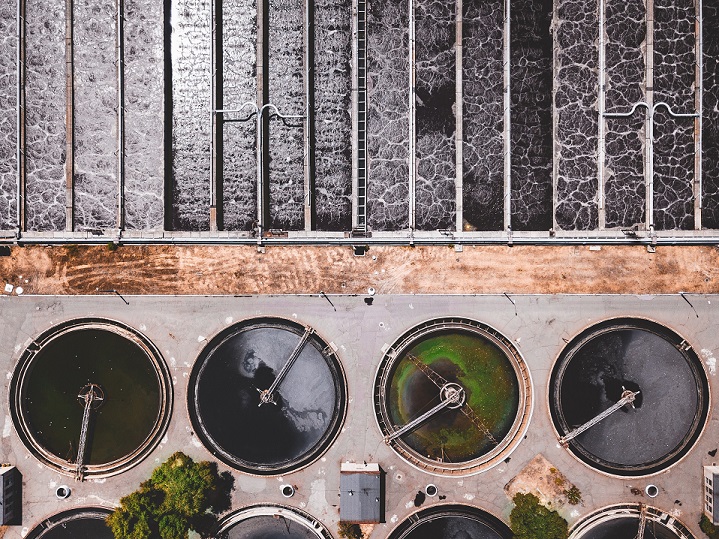
Reuse of treated wastewater
Reuse of treated wastewater is the increased utilization of treated wastewater as an alternative water source. In order to conserve groundwater by implementing treatment plants and rehabilitating existing ones. As well as improving the quality of the water produced to be used in reuse programs.
Objectives of the Treated Wastewater Use Initiative
Increasing the rate of wastewater reuse to raise the level of environmental conservation and safe environmental disposal.
Providing quantities of treated wastewater for reuse and safe environmental disposal.
Expand the use of treated water for various purposes to conserve groundwater.
The intended results of the initiative
Reuse of treated water by 25% in 2025.
Achieving the goals of the initiative in the year 2023.
Efforts of the Ministry of the Environment to raise awareness
The Ministry of Environment, Water, and Agriculture launched a workshop on Promising Opportunities for the Use of Renewable Water for Agricultural, Industrial and Environmental Purposes on June 20, 2022, in the Tabuk region. The aim of raise the awareness of farmers and beneficiaries of the importance of using triple-treated wastewater (renewed water) as one of the important sources of sustainable water supply for all purposes.
wastewater sources
There are many sources of sewage, including domestic drainage, industrial drainage, commercial drainage, rainwater drainage, filtering water (for lowering the groundwater level), etc. Drains often consist mainly of liquid organic matter from bathrooms, kitchens, and sinks, which are disposed of through drainpipes. In many areas, wastewater also includes liquid wastes from factories, hospitals, and restaurants, and these wastes have a negative impact on the work of the treatment process.
Processing stages
The treatment has three main stages, called a primary (preliminary) stage, a secondary stage, and a tertiary stage. First, the suspended solids (TSS) are separated from the effluent water, then the dissolved organic materials in the water are gradually converted into suspended solids by means of microorganisms generated in the water. In the last stage, biological solids (sludge) are disposed of or reused as fertilizer, and the water can be chemically or physically disinfected. The treated water is then pumped into any stream or river. It can also be used in woodland plantings, golf courses, and parks, and it can also be pumped underground to refill the aquifer.
Initial phase
It is the removal of materials that hinder operation and maintenance and that may cause wear or clogging of mechanical equipment, as well as the disposal of greases, oils, and fats by flotation.
Initial treatment stages
Entrance room (calming): Its primary purpose is to calm the speed and pressure of the water so that the flow system is changed from closed sewers to open sewers so that the surface of the water is exposed to atmospheric pressure and air, where the water stays for a period of 0.5 to 1 minute, and the speed of water in it is from 0.6 to 1.2 m/s.
Filtration
It is carried out in refineries, which are iron nets to seize large suspended materials from paper, pieces of cloth, wood, or pieces of thin glass, and dispose of them by ramming, drying, or burning.
The wastewater passes through filters before being treated to remove all the solid and floating materials that entered the wastewater, such as wooden pieces, towels, metal cans, etc. The water is filtered from these impurities through automatic or manual filters. Bar strainers are used with small spacings, which prevent the passage of any large solids that may subsequently damage or cause the water treatment equipment to fail.
Remove sand and rocks
The process of removing sand and rocks from the primary treatment stages, which is in fact the sedimentation process, where the wastewater passes through primary sedimentation basins at a relatively slow speed of 30 cm/min; This is for the sedimentation of suspended substances such as dust, sand, and metal pieces, and what is known as primary sludge collects at the bottom of the basin. Chemicals may be added to contribute to the sedimentation process, such as alum or iron salts, which are rather expensive. The froth floats on the surface, which is scraped from time to time, and it is an oily substance.
The treatment also includes the pre-treatment stage of purification and cleaning of water from rocks and sand. By controlling the speed of wastewater until it reaches a speed that allows the deposition of small rocks and sand at the bottom. While keeping most of the suspended organic matter in the water stream. It is important to remove sand, gravel, and small rocks early to avoid damage to plant equipment such as pumps, etc. Sometimes there is a so-called “sand sink” followed by a conveyor that transports the sand to a place where it can be reused, but sand and rocks are often disposed of by dumping them in a landfill.
Sedimentation
In the first sedimentation stage, the sewage is pumped into huge tanks called primary sedimentation tanks. These tanks are large enough that sludge and dirty material settle on the bottom and float material, grease and oils rise to the surface to be scraped. The objective of the initial sedimentation process is to produce a generally homogeneous liquid that can then be treated biologically as well as to extract the dirt so that it can then be disposed of or reused. Primary sedimentation tanks often include a mechanical scraper that continuously expels the dirty material into an opening at the bottom of the tank where it is pumped for further treatment.
Connect with Carewater to build sewage treatment units.

























